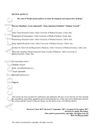Search
forLearn
5 / 5 resultslearn Neem Oil
natural substance from Neem tree with medicinal and pesticidal properties
learn Osteopontin
signaling protein that, when suppressed, may grow hair by reducing inflammation and stem cell loss
learn Stem Cell Factor
learn Vascular Endothelial Growth Factor
Research
5 / 1000+ results
research Design of a RADA16-Based Self-Assembling Peptide Nanofiber Scaffold for Biomedical Applications
RADA16 is a promising material for tissue repair and regenerative medicine but needs improvement in strength and cost.

research The Roles of Wnt/β-Catenin Pathway in Tissue Development and Regenerative Medicine
The Wnt/β-catenin pathway is important for tissue development and has potential in regenerative medicine, but requires more research for therapeutic use.
research Biological, Cellular, And Molecular Characteristics Of An Inducible Transgenic Skin Tumor Model: A Review

research ST14 Interacts With TMEFF1 and Is a Predictor of Poor Prognosis in Ovarian Cancer
High levels of ST14 and TMEFF1 proteins in ovarian cancer are linked to worse patient outcomes and may be a new treatment target.
research Vitamin D Concentrations Are Decreased in Patients with Alopecia Areata
People with Alopecia Areata have lower vitamin D levels.
Community Join
5 / 80 resultscommunity Hair loss research is a money grab
Hair loss is linked to DHT, with treatments like finasteride and minoxidil being common but not definitive. Economic interests influence research, and there is potential for new treatments like PP405 and RU58841.

community Compressed part of research of theory of androgenic/anabolitic balance. AGA h-responders analytic. Theory of physio-metabolitic method of anti AGA treatment
The treatment for androgenetic alopecia involves using finasteride and minoxidil with intense exercise and cold exposure to boost metabolism and reduce androgenic effects, potentially leading to hair regrowth. This approach may activate biological pathways for improved hair and overall health.
community SUBE3 for sale in the gray market?
SCUBE3 is available online but poses risks like tumor promotion and high costs. Users advise against using it due to health concerns and inefficacy as a standalone treatment.
community If PP405 goes systemic this would be quite catastrophic
Concerns about the potential systemic effects and safety of PP405 for hair loss, with discussions on its comparison to existing treatments like finasteride and minoxidil. Users express skepticism about untested research chemicals and emphasize the importance of clinical trials to ensure safety and efficacy.
community Forgotten 'Total Revival' Stack
Cyclosporine A is discussed as a powerful hair growth stimulant, potentially more effective than minoxidil, but concerns about safety and side effects, including cancer risk, limit its use. The conversation highlights the need for further research and experimentation with topical application, despite its risks.